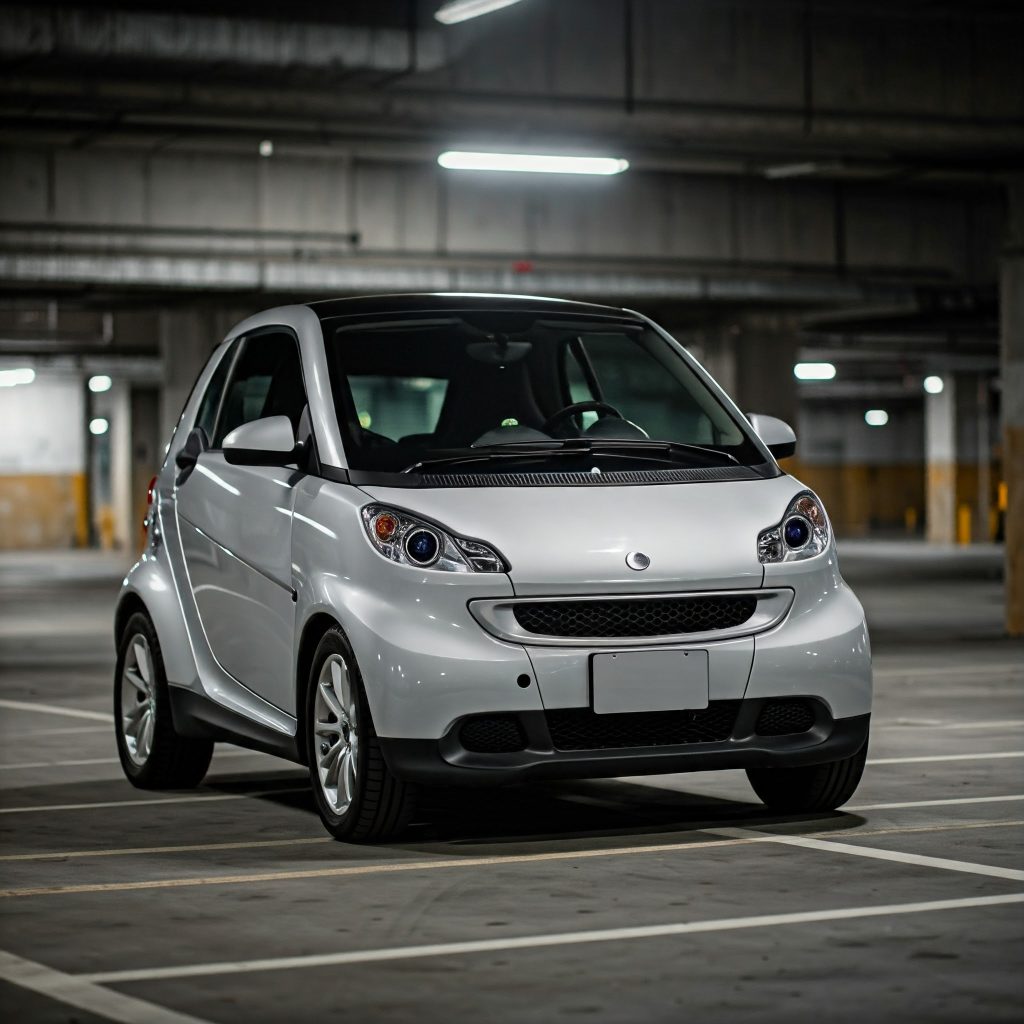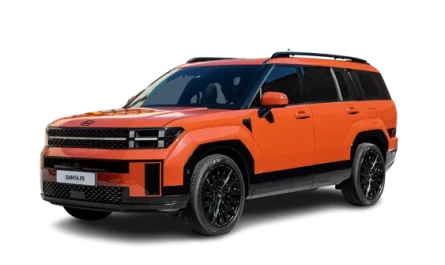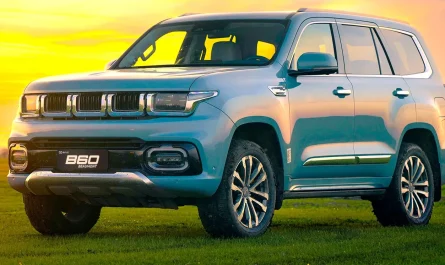
The Smart Fortwo is a distinctive and compact auto, engineered for efficiency and maneuverability in urban settings. Despite its impressive design, there are numerous ways for car enthusiasts and everyday drivers to enhance and personalize this unique vehicle. This guide covers essential modifications for the Smart Fortwo, including performance, aesthetics, and practical upgrades that can elevate your driving experience.
Smart Fortwo Specifications
General
| Manufacturer | Smart (a division of Mercedes-Benz) |
| Production | 1998-present |
| Body style | Two-door, two-seater microcar |
Engine
| Type | Inline-three, turbocharged |
| Displacement | 698 cc |
| Power output | Varies depending on model, typically ranging from 60-80 horsepower (45-60 kW) |
| Transmission | 5-speed manual or automatic |
Performance
| Top speed | Varies depending on model, typically around 80-90 mph (128-145 km/h) |
| Acceleration (0-60 mph) | Varies depending on model, typically around 10-12 seconds |
| Fuel economy | Excellent, typically around 50-60 miles per gallon (U.S.) |
Dimensions
| Length | 8 feet 4 inches (2.54 meters) |
| Width | 5 feet 1 inch (1.55 meters) |
| Height | 4 feet 11 inches (1.5 meters) |
| Wheelbase | 73 inches (1.85 meters) |
Other
| Steering | Front wheel |
| Suspension | Independent front, torsion beam rear |
| Brakes | Disc front, drum rear |
| Safety features | Includes airbags, anti-lock brakes, and electronic stability control |
History
- 1994: Swatch Watch Company and Mercedes-Benz announced their collaboration to create an innovative, compact, and environmentally friendly car.
- 1998: The Smart Fortwo made its debut at the Paris Motor Show.
- 1999: The first Smart Fortwo models were launched in Europe.
The Smart Fortwo, a compact and fuel-efficient city vehicle, has a concise yet fascinating history. It was unveiled in 1998 as the result of a unique partnership between the Swatch Watch Company and Mercedes-Benz. With its unique three-door design and compact dimensions, the Fortwo quickly became popular as a practical and environmentally conscious choice for city driving. Over time, it has evolved with numerous upgrades, including the addition of electric and hybrid options. Despite growing competition in the small car market, the Smart Fortwo remains a preferred choice for those looking for an economical and space-efficient vehicle.
Models
The Smart Fortwo has evolved through three generations, each introducing unique features and improvements. The first generation (1998-2007) brought the clever microcar concept to life, featuring a three-door design, a rear-mounted engine, and a lightweight structure. The second generation (2007-2014) saw a more rounded design, enhanced safety features, and a broader range of engine options.
The third generation (2014-present) offers a more spacious interior, an extended wheelbase, and various powertrain options, including gasoline, diesel, and electric. The Fortwo is known for its compact size, making it ideal for city driving and parking in tight spaces. It delivers excellent fuel efficiency and includes various safety features such as airbags, anti-lock brakes, and electronic stability control. Its distinctive design and numerous customization options allow for personalization. However, potential drawbacks include limited rear seating space, small cargo capacity, and driving dynamics that may not be as sporty as other vehicles.
Engine and Fuel Economy
| Model | Engine Type | Displacement | Power Output | Fuel Economy (Combined) |
| Smart Fortwo (Gasoline) | Inline-three | 698 cc | 60-80 horsepower | 40-50 MPG (U.S.) |
| Smart Fortwo (Diesel) | Inline-three | 800 cc | 65-75 horsepower | 50-60 MPG (U.S.) |
| Smart Fortwo Electric Drive | Electric motor | N/A | 81 horsepower | 100+ miles per charge |
Performance Upgrades: Boost Efficiency and Speed
Although the Smart Fortwo isn’t built for high-speed performance, certain modifications can enhance its handling, power, and efficiency. Here are some key performance upgrades to consider:
- Cold Air Intake System: Installing a cold air intake system can enhance your Smart Fortwo’s performance by allowing the engine to take in more air, which improves horsepower and provides a more responsive engine.
- ECU Tuning: For those looking to boost their Smart car’s power, ECU (Engine Control Unit) tuning is a great option. It optimizes the car’s performance, resulting in an improvement. Acceleration and fuel efficiency.
- Exhaust system upgrade: A new exhaust system not only enhances the sound of your Smart Fortwo but also increases horsepower by reducing exhaust flow restrictions, improving engine efficiency.
Aesthetic Modifications: Customize Your Ride’s Appearance
Enhancing your Smart Fortwo’s exterior can make it stand out even more. Here are a few ways to personalize its look:
- Custom Paint Jobs: A custom paint job offers endless possibilities for personalization, whether you choose bold colors, matte finishes, or unique artwork to make your Smart Fortwo one-of-a-kind.
- Body Kits: Body kits for the Smart Fortwo, including custom bumpers, side skirts, and spoilers, provide both style and function. They can give the car a sportier appearance and improve aerodynamics.
- Custom Wheels and Rims: Upgrading to custom wheels and rims not only enhances the vehicle’s appearance but also has the potential to improve its performance. Lightweight alloy rims, for instance, reduce the car’s weight, enhancing speed and fuel economy.
Interior Upgrades: Enhance Comfort and Convenience
Though the interior of the Smart Fortwo is small, there are several ways to upgrade it for a more comfortable and functional driving experience:
- Seat Upgrades: Replacing the standard seats with sport or leather options can improve comfort and style. Choose seats with enhanced lumbar support or custom stitching for added luxury.
- Steering Wheel: A custom steering wheel, like one wrapped in leather or carbon fiber, can give the interior a sporty, luxurious feel and provide a better grip for improved control.
- Infotainment System: Modernize your Smart Fortwo by installing a new infotainment system with features like a touchscreen interface, Apple CarPlay, Android Auto, or built-in navigation to improve connectivity and convenience.
Lighting Upgrades: Improve Safety and Style
Lighting modifications for the Smart Fortwo can boost visibility and add a modern look to your vehicle. Popular upgrades include:
- LED Headlights and Taillights: Upgrading to LED lights can significantly enhance nighttime visibility and give your car a sleek, futuristic appearance. LEDs are also more energy-efficient and longer-lasting than traditional bulbs.
- Underbody Lighting: For added flair, underbody lights create a dramatic glow on the car’s exterior, making it stand out, especially in low-light conditions.
- Interior Lighting: Installing custom interior lighting, such as LED strips along the dashboard or footwells, can create a modern ambiance and improve the overall driving experience.
Practical Add-ons: Combine Functionality with Convenience
Even though Smart cars are known for their compact and practical design, there are ways to enhance their functionality further:
- Roof Racks: A roof rack is ideal for those who need extra cargo space. It can hold items like bikes or luggage, making your Smart Fortwo even more versatile.
- Backup Camera: A backup camera is essential for navigating tight parking spaces, improving safety, and making city driving more convenient.
- Parking Sensors: While Smart cars are already comfortable parking in small spaces, parking sensors add an extra layer of safety by detecting obstacles and alerting the driver when they are too close to an object.
Conclusion: Transform Your Smart Fortwo with Essential Upgrades
The Smart Fortwo is a fantastic platform for customization and performance enhancements. Whether “You’re aiming.” to boost performance with modifications like a cold air intake or ECU tuning, personalize your car’s look with aesthetic upgrades, or add practical features like a backup camera or parking sensors, there are endless possibilities to explore.
READ MORE : Reliant Robin Still Charms
TABLE OF CONTENT
- A Quirky, Unforgettable Drive
- Specifications
- Story Behind the Reliant Robin
- Is It a Flaw or Feature


